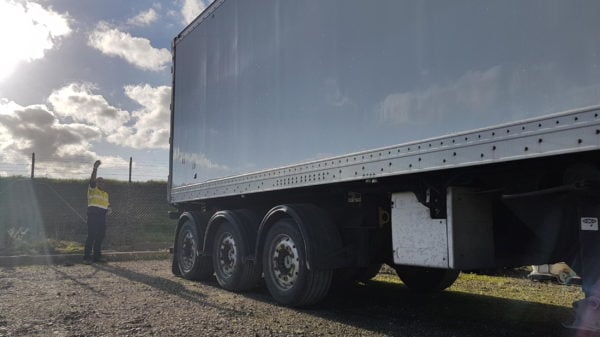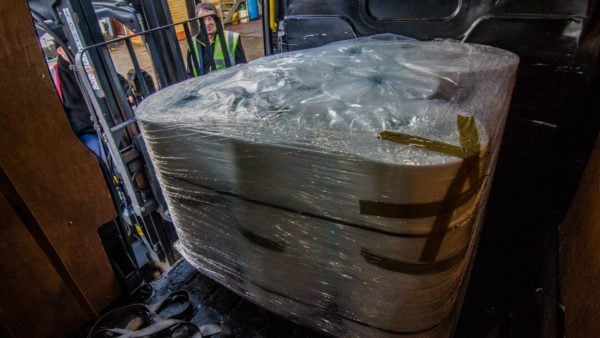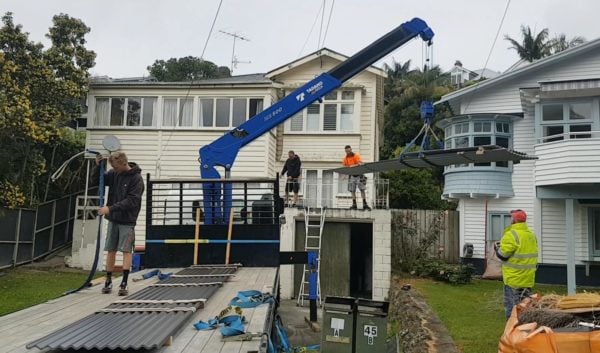Spotters are used in the transport and construction industry when it’s difficult to manoeuvre a vehicle or an object. Examples include:
- Reversing or coupling a heavy vehicle (e.g. semitrailer or truck and trailer)
- Manoeuvring a forklift with a large load
- Lifting or positioning a large load with a truck loader crane or other crane
- Manoeuvring oversized vehicles on construction sites and in mining (for example, dumping spoil, directing earthmoving machinery, etc)
What does a spotter do?
A spotter uses a set of agreed-upon hand signals to tell the driver or crane operator what to do. There are standard signals suggested for crane operators, but for drivers, it’s usually discussed beforehand as there are many variations.
NATO has a set of standard hand signals for ground guides which are used by all NATO army units (i.e. for guiding military vehicles such as tanks which have very large blind spots).
The main signals a vehicle spotter will give are:
- Stop (the most important one)
- Turn left or right
- Slow
- Forwards
- Backwards
The main signals a crane spotter will give are:
- Stop
- Raise the boom
- Lower the boom
- Left or right
- Forwards or backwards
Spotters should wear hi-vis clothing. A two-way radio can help, but the idea of a spotter is to use hand signals.
Traps for unwary spotters
As a spotter, you need to be visible to the machine operator or driver at all times, which means you either need to be able to see their eyes in a mirror or see their eyes through a window. If you can’t see them, they can’t see you.
Avoid walking backwards while you’re spotting otherwise you risk tripping over, or perhaps falling off a loading dock.
Be aware of other vehicles that are operating around you. Avoid straying into lanes or vehicle access points where pedestrians are not usually allowed.
Cone off an area where a vehicle is manoeuvring if that will reduce risks.
Reversing or coupling a truck
The driver often has significant blind spots in mirrors and immediately behind the vehicle. A spotter will give the driver confidence they can continue to move without running into something.

Newer trucks have reversing cameras which somewhat remove the need for a spotter.
However, when connecting a truck and trailer or truck and semitrailer, the driver must know how to connect them.
Manoeuvring with a forklift
A large load on a forklift will obscure the view of the driver when going forwards. Usually, the forklift driver will drive in reverse so that they can see where they are going, but to position the load in the right place (e.g. on the back of a truck or into a van), they may need a spotter to help.

Lifting loads with a crane
Many cranes now have remote control units that enable the operator walk around the site and view the load as it’s being placed. But, there may be a need for a spotter if the load is being lifted to height, or if the operator can’t leave the crane (sometimes the case with mobile cranes and always the case with tower cranes). Truck loader crane certificates should teach an operator what hand signals to use.


